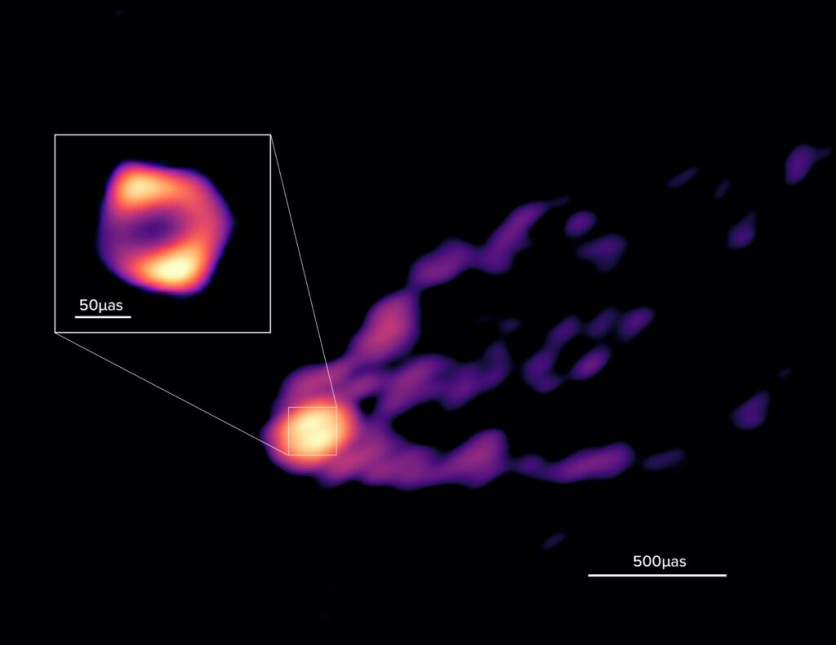In a groundbreaking discovery, scientists have shed new light on the origins of the powerful jet emanating from the supermassive black hole at the center of the M87 galaxy.
This finding reveals, for the first time, the black hole's jet and its source in one image. It also shows that the black hole's ring is larger than previously believed.

A Plethora of Telescopes
Scientists used a collaboration of radio telescopes from various parts of the globe, such as the National Science Foundation's National Radio Astronomy Observatory (NRAO) and Green Bank Observatory (GBO), Atacama Large Millimeter/submillimeter Array (ALMA), Very Long Baseline Array (VLBA), and Green Bank Telescope (GBT), which is known as the Global mm-VLBI Array (GMVA), to generate these findings.
"M87 has been observed over many decades, and 100 years ago, we knew the jet was there, but we couldn't place it in context," Ru-Sen Lu, lead author of the new paper and an astronomer at the Shanghai Astronomical Observatory, said in a statement.
"With GMVA, including the premier instruments at NRAO and GBO, we're observing at a lower frequency, so we're seeing more detail- and now we know there are more details to see."
The team was able to obtain a more complete view of the supermassive black hole and its jet using various telescopes and instruments. This allowed them to paint a full picture, which was not previously possible with the EHT.
The VLBA offered a complete view of the jet and the black hole. Additionally, the ALMA enabled the researchers to capture a clear image of the bright radio core of M87, while the GBT's 100-meter collecting surface was highly sensitive to resolve both the large and small-scale parts of the ring and allowed the finer details to be observed.
Read Also : Astronomers Locate One of the Biggest Black Holes Ever-30 Billion Times Larger Than the Sun!
50% Larger than Previously Thought
According to Toney Minter, the GMVA coordinator for the GBT, the previous imaging of the EHT only displayed a portion of the accretion disk surrounding the black hole's center.
However, by changing the observing wavelengths from 1.3 millimeters to 3.5 millimeters, they were able to view more of the accretion disk and the jet simultaneously, leading them to discover that the ring around the black hole is 50% larger than previously thought.
Furthermore, the observations confirmed the formation of the jet, which is created by the magnetic fields surrounding the spinning core of the black hole, and winds rising from the black hole's accretion disk.
Harshal Gupta, the NSF Program Officer for the Green Bank Observatory, noted that this discovery highlights the importance of telescopes with complementary capabilities and how they can be used to advance our understanding of astronomical objects and phenomena.
The results of this research offer a significant advancement in understanding the behavior of black holes and their jets, which could lead to further developments in the field of astrophysics.
The findings of the team were published in the journal Nature.
Related Article : Astronomers Find Strange Object Being Dragged Into Milky Way's Supermassive Black Hole

ⓒ 2025 TECHTIMES.com All rights reserved. Do not reproduce without permission.




